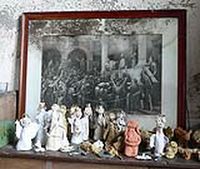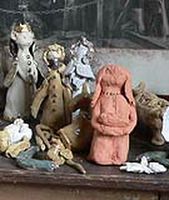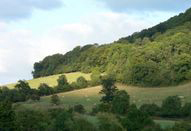
Tuesday, September 27, 2005
Monday, September 26, 2005
Pavel's Second Life
They have a few features that make them sound destined for financial and usage success: a simple programming model, rights to intellectual property remain with the user creators, an internal economy that does real business for users, and a rate structure based on pay for creation rights.
Sunday, September 25, 2005
Armed and dangerous dolphins are missing.
Hmmm. I hope they just seized the opportunity to escape from slavery.
Saturday, September 24, 2005
The illuminated continent
'Bride' Made with dSLR
(Gotten off John Nack's Adobe blog. His post about the Undo in the elevator in the new tower is great, too.)
Friday, September 23, 2005
The Nag's Head Ghosts
 About halfway up the hill you will see the Nag's Head pub on your right which has a most unusual haunting. Look up at the little window on the top floor. Within this room there is a cupboard and within the cupboard is a painting -- and it is actually the painting that is haunted. The painting is of an old prophet and it's said that anyone who looks at it will be driven mad. Certainly, there have been three occasions in the past when people, perfectly sane and seemingly perfectly happy, have stayed in that room and then, for no apparent reason, committed suicide. One was a man who had just been promoted, another was a young girl looking forward to getting married and the third was a First World War soldier who had just returned from the front. Not surprisingly, the cupboard is always kept locked so that no one can inadvertently see the painting these days.
About halfway up the hill you will see the Nag's Head pub on your right which has a most unusual haunting. Look up at the little window on the top floor. Within this room there is a cupboard and within the cupboard is a painting -- and it is actually the painting that is haunted. The painting is of an old prophet and it's said that anyone who looks at it will be driven mad. Certainly, there have been three occasions in the past when people, perfectly sane and seemingly perfectly happy, have stayed in that room and then, for no apparent reason, committed suicide. One was a man who had just been promoted, another was a young girl looking forward to getting married and the third was a First World War soldier who had just returned from the front. Not surprisingly, the cupboard is always kept locked so that no one can inadvertently see the painting these days.
The pub has more normal hauntings too. Some work was being done on the building in the early 1980s when a previously unknown panelled room was discovered. Opening the room must have released the ghost associated with it. Perhaps he was also the man in the "funny long coat and hat who came through the wall" that a young girl once saw there.
Thursday, September 08, 2005
Tuesday, September 06, 2005
Sunday, September 04, 2005
Children develop cynicism at an early age
In the second part of the study the children were asked how self-interest might lead someone to make an incorrect statement. Children were provided with three choices: intentional deception, unintentional bias, or pure mistake. They rarely endorsed bias as the best possible explanation for being incorrect. The youngest children were more likely to think the characters were lying. ... "It is not until sixth grade that children begin to endorse lies and biases as equally plausible explanations for self-interested incorrect statements," Mills said. "Adults are clearly sensitive to all three sources of inaccuracy. How children begin to understand what it means to be biased is an open question."
Alice in Wonderland by Annie Leibovitz
Friday, September 02, 2005
Silicon Valley Network Analysis
On the SiVNAP--Papers's site, the last article summarizes the network effect on the founding of the semiconductor industry, the growth of Venture capital firms, and the relationships between Stanford and local industry.
I miss the Bay Area! Although it was somewhat disconcerting how small the world felt, every time you went for an interview ("what do you think of so-and-so--?").
Physicists vs. Sociologists, oh my.
It probably sounds like I'm not sympathetic, but actually I am. I had it bad in the cross-disciplinary early days of Internet research when I wrote my dissertation. It was hard to figure out who to read, what to cite, and where to follow-up. Hard, but not impossible, and so I am sympathetic. (But possibly the relatively powerless position of grad student made me more concerned about this process than tenured physics professors?)
Eszter at Crooked Timber has a nice reading list for social network studies. And here's the link to the infamous social network paper by physicists, on the Eurovision song contest -- always an interesting subject! Even more entertaining, from their abstract: "We investigate the complex relationships between countries in the Eurovision Song Contest, by recasting past voting data in terms of a dynamical network. Despite the British tendency to feel distant from Europe, our analysis shows that the U.K. is remarkably compatible, or ‘in tune’, with other European countries. Equally surprising is our finding that some other core countries, most notably France, are significantly ‘out of tune’ with the rest of Europe."
I'd guess the physicists are British.






